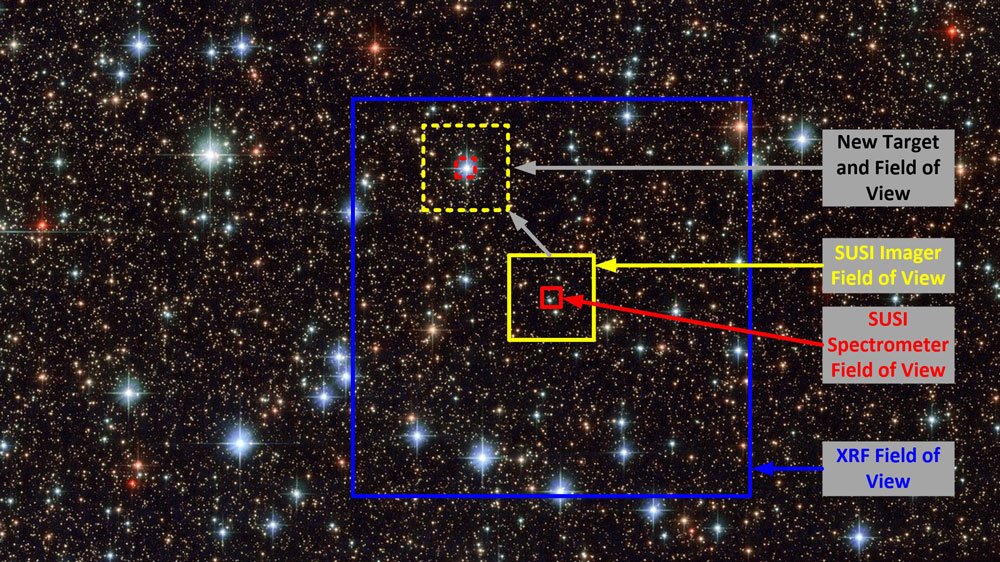BACKGROUND
Southwest Research Institute® (SwRI®) has developed the Shock Interaction and Breakout Explorer (SIBEX) concept to enable observation of the early minutes and hours of transient astrophysical events such as colliding neutron stars and supernovae. This mission concept was submitted to NASA in response to the Astrophysics Medium Explorers (MIDEX) opportunity in December 2021. SIBEX consists of a spacecraft in Low Earth Orbit which incorporates an X-ray imager, an ultraviolet (UV) imager, and a UV spectrometer. The spacecraft will utilize the X-ray instrument, which possesses a wide field of view to detect novel sources of emissions or unexpectedly brightening sources. When a new event is detected, the spacecraft will reorient to direct the narrow field of view UV imager and extremely narrow field of view UV spectrometer toward the emissions source. Data from the UV imager is used to refine knowledge of the target location and enable observation by the UV spectrometer. This architecture enables the rapid deployment of all sensors toward novel events in the first few moments after they begin and facilitates the collection of rich scientific data.
APPROACH
The SIBEX architecture relies upon signal processing capabilities related to detection and tracking of novel events in the X-ray and UV sensor data. Methods were developed to continuously monitor large quantities of X-ray sensor data to reliably detect novel emissions sources and differentiate such events from spurious signals generated as an effect of sensor operation. Additional approaches were developed to monitor a large population of known X-ray sources to rapidly detect unexpected increases in brightness. Methods were developed to analyze UV images to recognize known UV emissions sources, estimate and correct distortions resulting from sensor operation and imperfect spacecraft attitude control, and identify unexpected sources. These mechanisms may be used to precisely localize a new source of emissions and guide the spacecraft attitude control systems to focus the UV spectrometer to the target for observation.
Success of the SIBEX mission requires that these signal processing algorithms execute reliably, in real-time, on computationally constrained spaceflight processing hardware. Investigations carried out under this research characterized the performance of the algorithms and created initial implementation plans and prototypes which provided the required processing throughput on spaceflight hardware.
ACCOMPLISHMENTS
This research provided essential technical support to the formulation of the SIBEX concept, developing and refining technical approaches to demonstrate the feasibility of the mission and reacting to changing functional and performance requirements. Algorithms, simulation software, and prototype implementations developed under the program constitute a foundation for further performance studies, demonstrations, and continued development under future mission funding.

Figure 1: Illustration of automatic detection of novel astrophysical event and reorientation of the spacecraft to direct narrow field of view ultraviolet sensors toward the event. XRF is the wide field of view X-ray sensor. The new event is first detected by this sensor. Upon detection, the spacecraft is reoriented to direct first the ultraviolet imager then the ultraviolet spectrometer toward the event. On-board signal processing of the X-ray and ultraviolet data is used to detect the event and guide spacecraft orientation.
